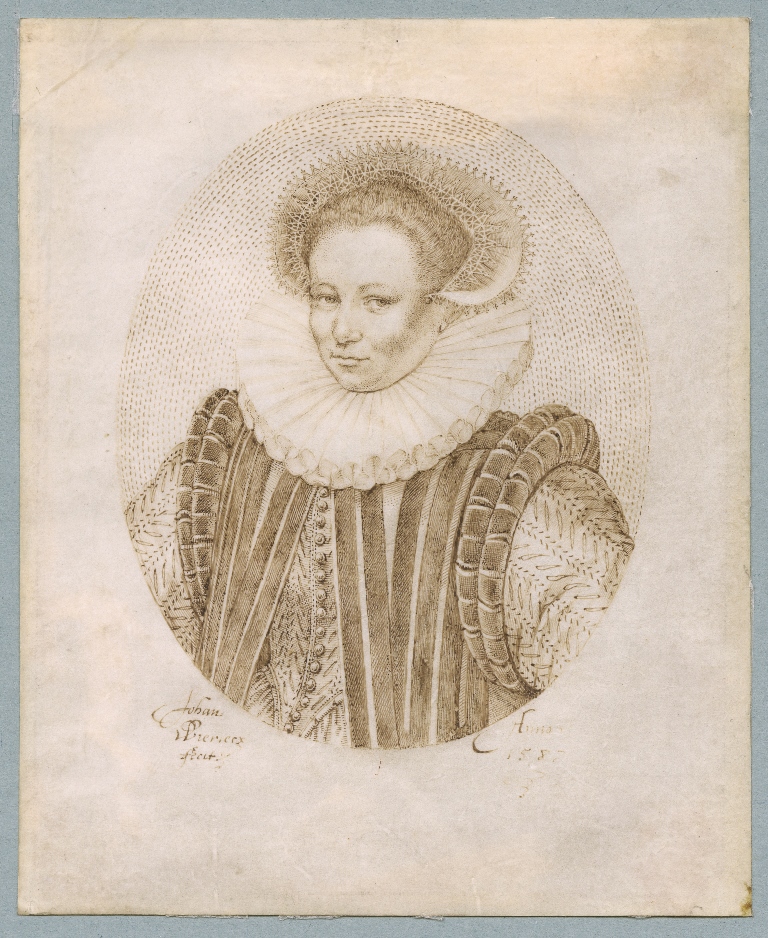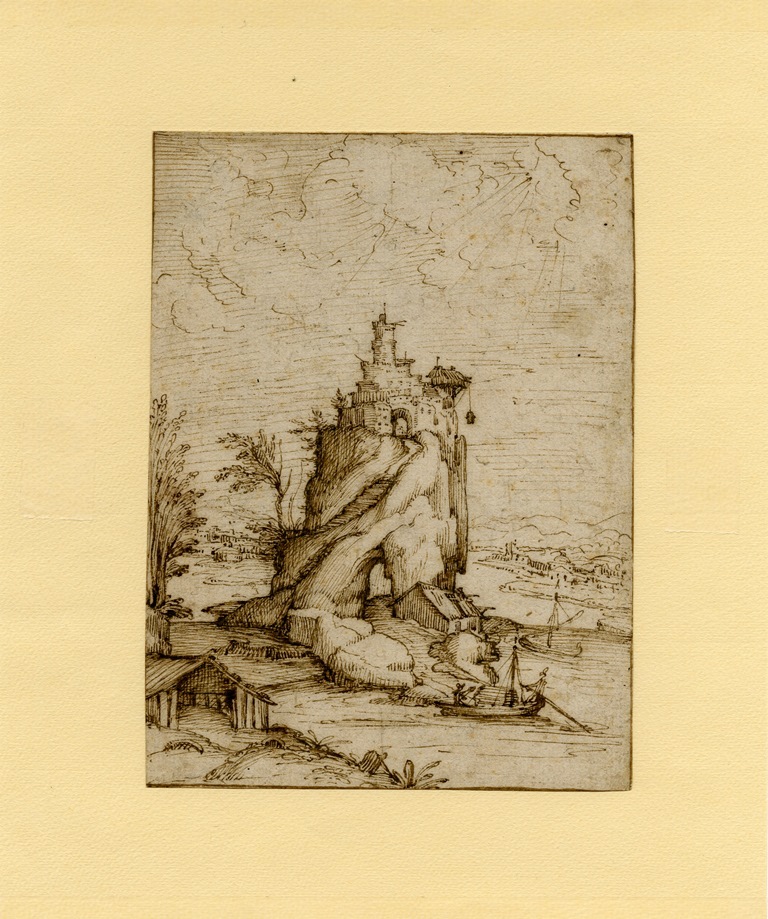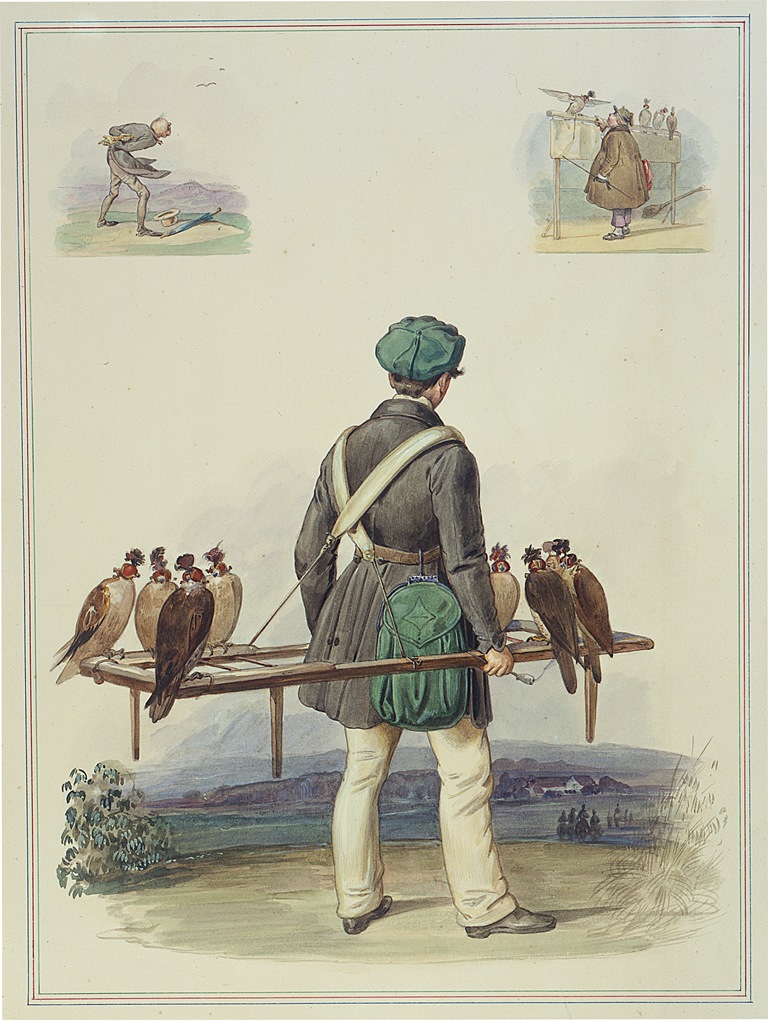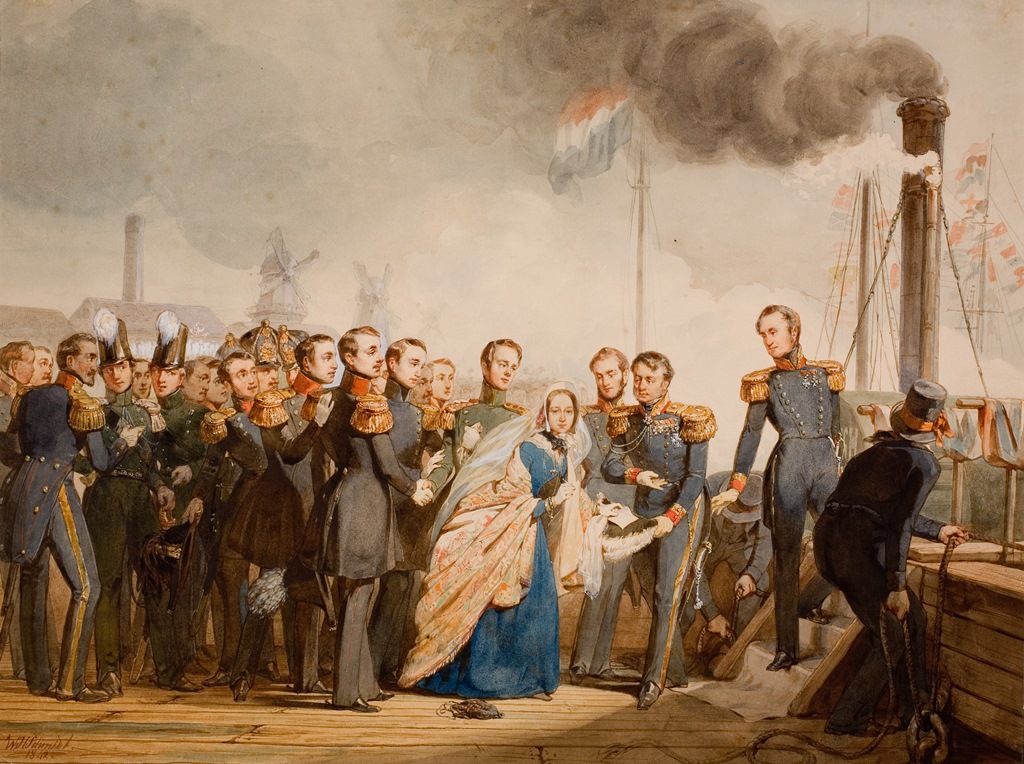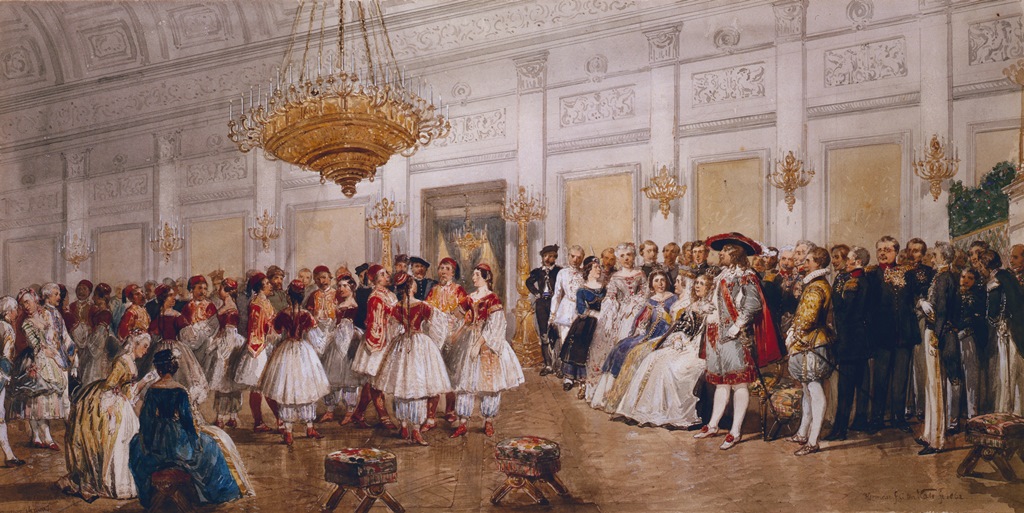Besides paintings, other works of arts, historical objects, books and photographs, the Royal Collections of the Netherlands also contain numerous prints and drawings. Most of these are portraits or depictions of historical events and locations, covering a period of more than four centuries.
A historical event
A good example of a record of a historical event is shown in this drawing of the visit by the four-year-old Prince of Orange, later to become stadholder William V, to the French ambassador in 1752. It is just one scene from a paper scroll some six metres in length: a fantastic parade of coaches, horsemen, foot guards, halberdiers and outriders in full ceremonial dress. The scroll was probably used as an example showing the order of procession for such visits.
Portraits
The drawings in the collection are very diverse. The subject matter ranges from portraits to still-lifes of flowers, and the media include silverpoint, graphite, pen and ink, charcoal, chalk and watercolour. This miniature 1587 portrait of Anna, one of the daughters of William of Orange, is drawn in silverpoint on a piece of parchment measuring 11 by 9 centimetres.
Collection focus
The majority of works in the collection of prints and drawings were created during the nineteenth century period. However, there are also some outstanding works from the early seventeenth century, such as a drawing by Paul Bril of a castle in the medieval county of Katzenelnbogen in Germany, a property formerly owned by the House of Nassau.
Nineteenth century
Artists from the nineteenth century who are well represented in the drawing and print collection include Jongkind, Sonderland, Rochussen, Ten Kate and Eerelman. One particularly special collection from this period is a series of drawings of falconry around Paleis Het Loo. There are also plenty of portraits of members of the royal family, statesmen and other famous and less well-known Dutch people.
Prints
Of course the collection contains many depictions of palaces and other royal residences. There are unique drawings, and well-known as well as rare prints. The techniques used include engraving, etching, aquatint and lithography. This print of a cross-section of the Huis ten Bosch palace in The Hague shows the eastern wall of the Orange Hall (Oranjezaal), not entirely by coincidence as here to this very day hangs the Hall’s largest painting, a work by Jacob Jordaens showing a triumphant Prince Frederick Henry.
Colour and media
Most of the prints, like this one showing a mantelpiece at Noordeinde Palace in The Hague, are printed in black ink. Some look more vibrant because they have been coloured by hand, and others are printed in colour. The most common material used for the prints is paper, but a few are on parchment and in exceptional cases, silk.
Family events
There also are drawings showing family events, such as this one depicting the departure of Princess Sophie in 1842. She had just married and was about to settle permanently in Weimar in Germany. Court balls were official occasions and this one, a costumed dance held at Noordeinde Palace in 1862, was considered important enough to be made the subject of a series of watercolours. Several members of the royal family were in attendance.

